Abstract
Four adults were trained, using instructions and a matching-to-sample procedure, to select Stimulus B1 in the presence of Stimulus A1, B2 in the presence of A2, and B3 in the presence of A3 (the AB relations). Analogous PQ relations were trained. Afterwards, one stimulus in Set A and another stimulus in Set B appeared together as a sample, and novel Stimuli X1 and X2 were the comparisons. Responses to X1 were reinforced if the two stimuli in the sample had been related in the previous training (e.g., A1 and B1), and responses to X2 were reinforced if the two samples had not been related (e.g., A1 and B2). These were the ABX relations. In a test in which a stimulus of Set P and another of Set Q were the samples and X1 and X2 were the comparisons, 2 subjects selected X1 when the samples were P1 and Q1, P2 and Q2, and P3 and Q3, and selected X2 in the presence of the other six sample combinations (P1Q2, P1Q3, P2Q1, P2Q3, P3Q1, and P3Q2). Another subject showed the same responding after additional training. In the second experiment, 3 adults and an 11-year-old child were trained on AB, PQ, and ABX relations, and they showed the symmetrical relations BA and QP upon testing. Then all 4 of these subjects responded accurately to the PQX test. Results of Experiments 1 and 2 showed novel, consistent comparison selection based on the previously established relation between the two stimuli in the sample. In a third experiment, 3 of the subjects who had shown PQX relations were trained on EFX relations, with pairs of E and F stimuli as samples and X stimuli as comparisons. When the EF relations were tested, all 3 subjects consistently selected F1 in the presence of E1, F2 in the presence of E2, and F3 in the presence of E3 from the first trial. The results of Experiment 3 showed novel stimulus relations after training with a more complex conditional discrimination format.
Full text
PDF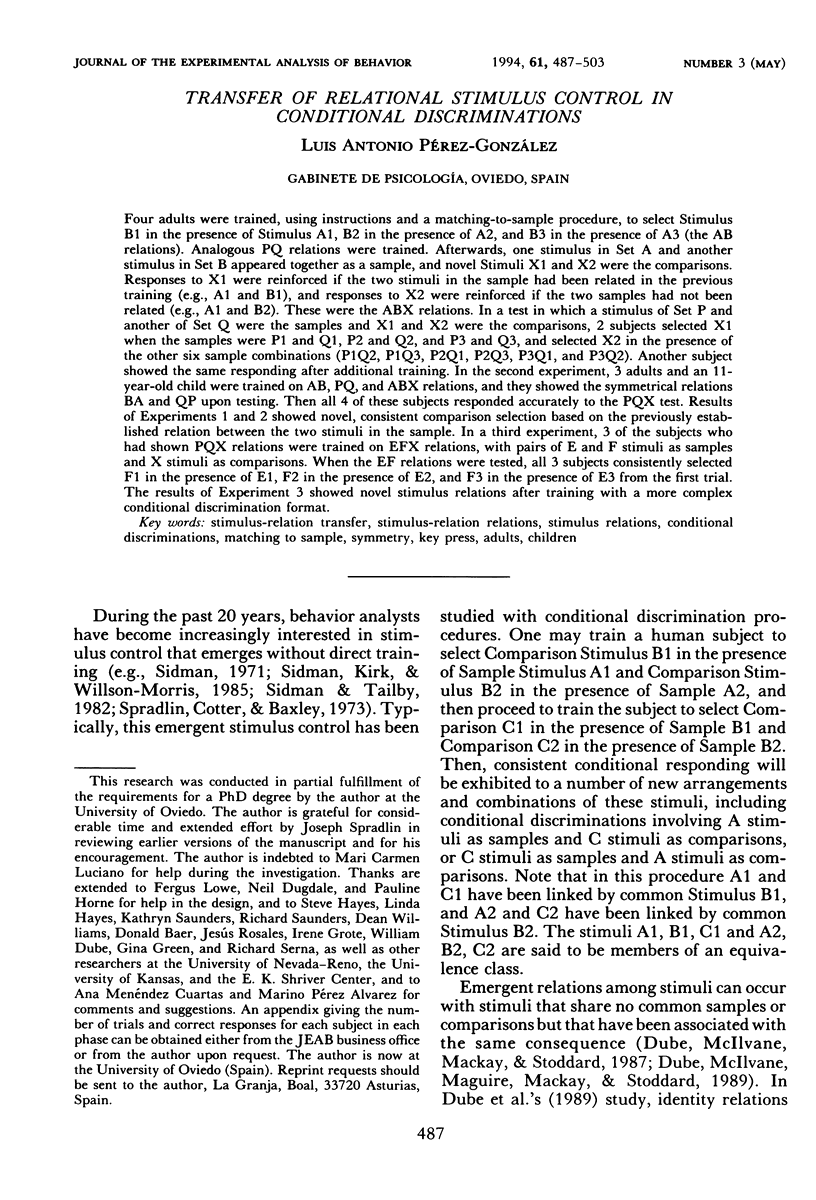
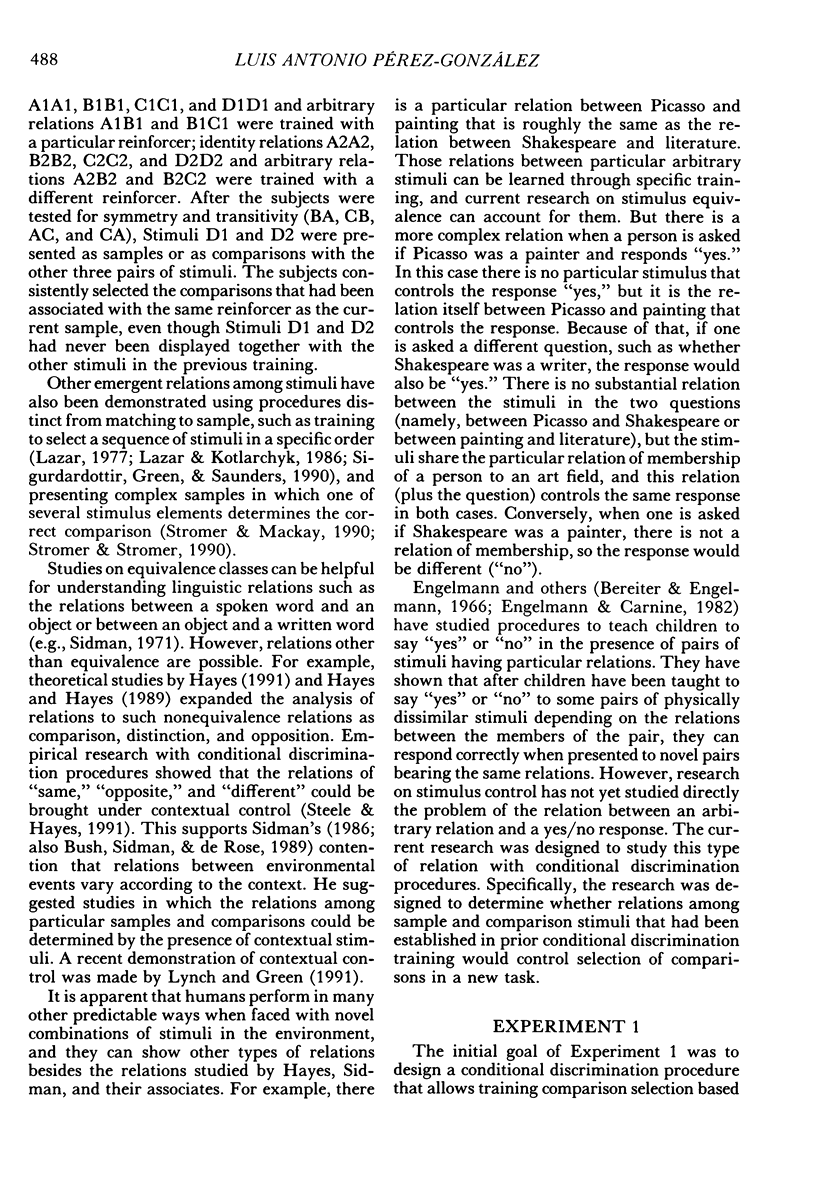
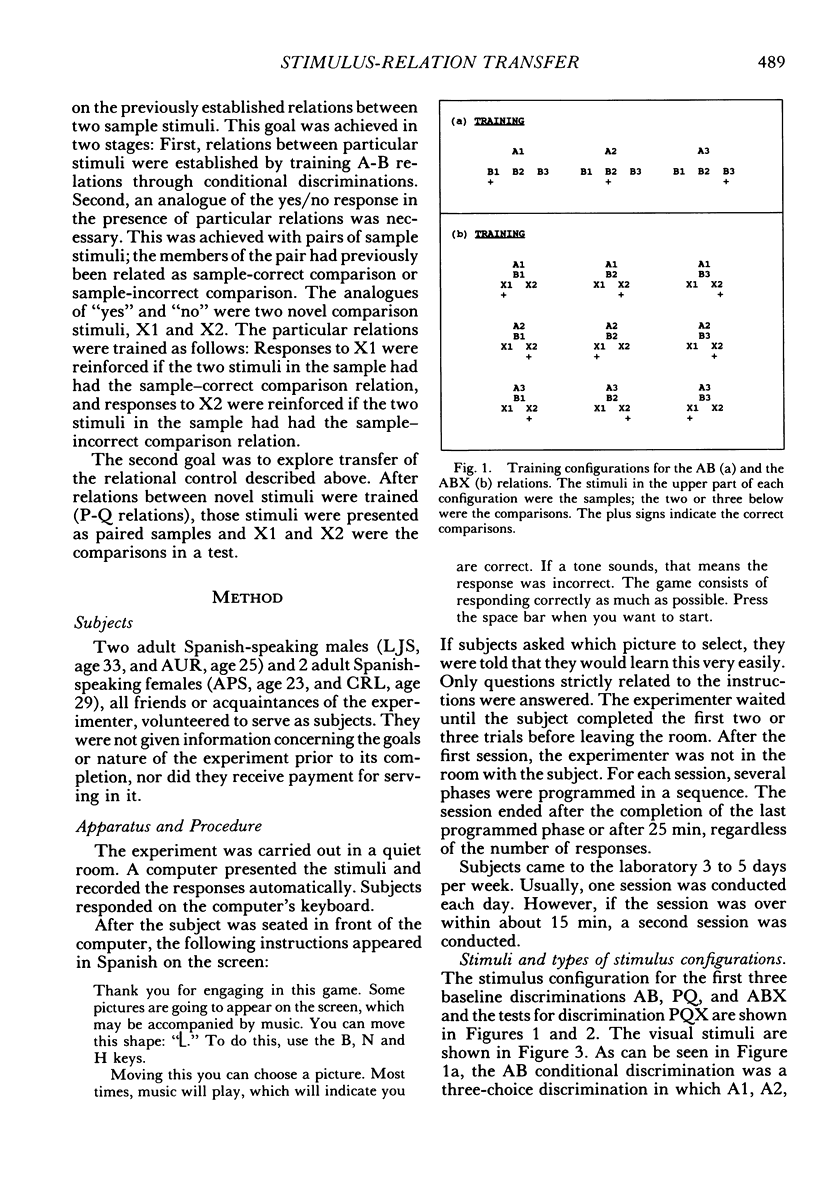
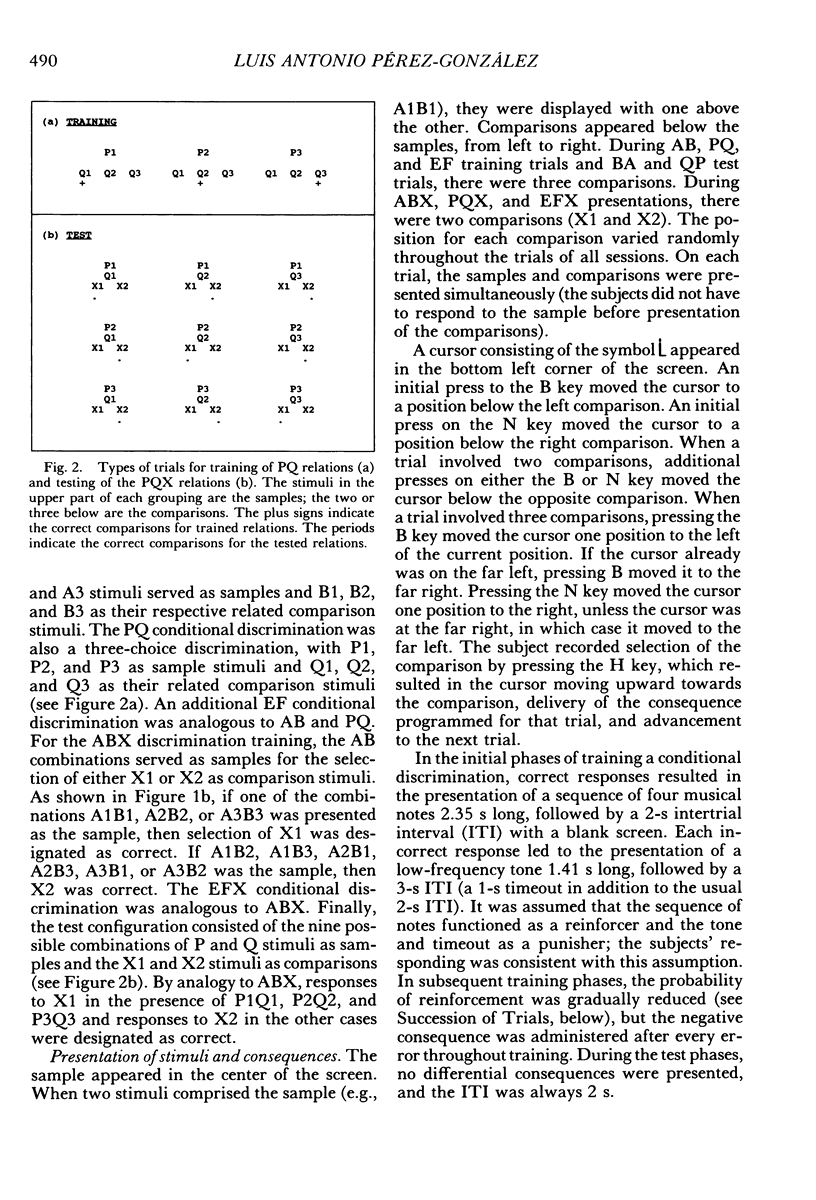
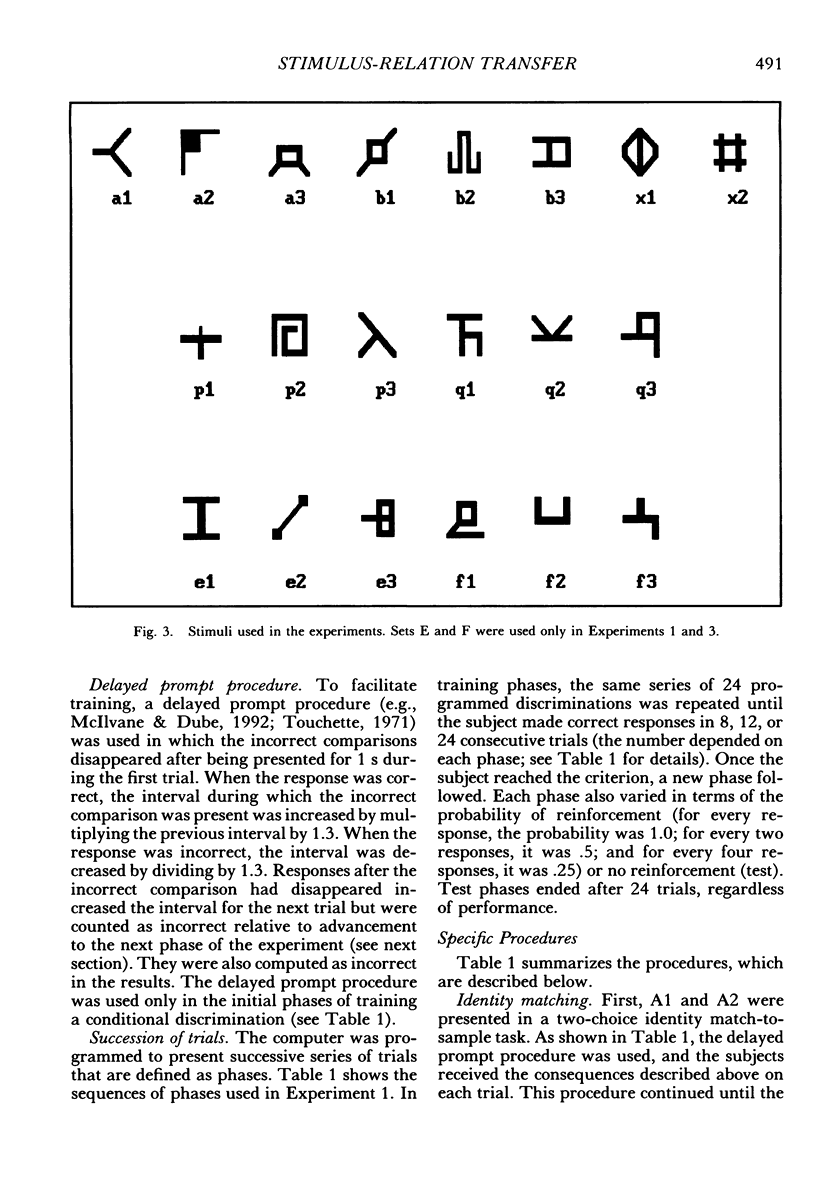
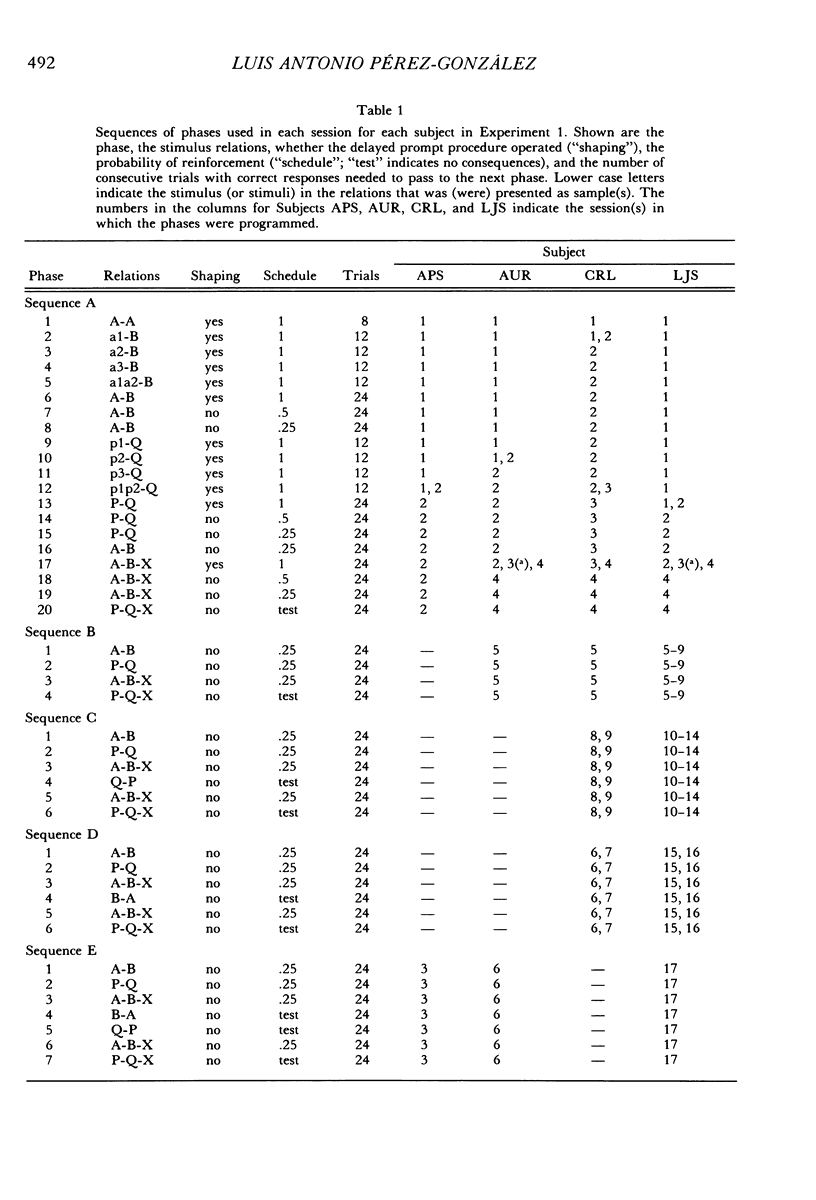
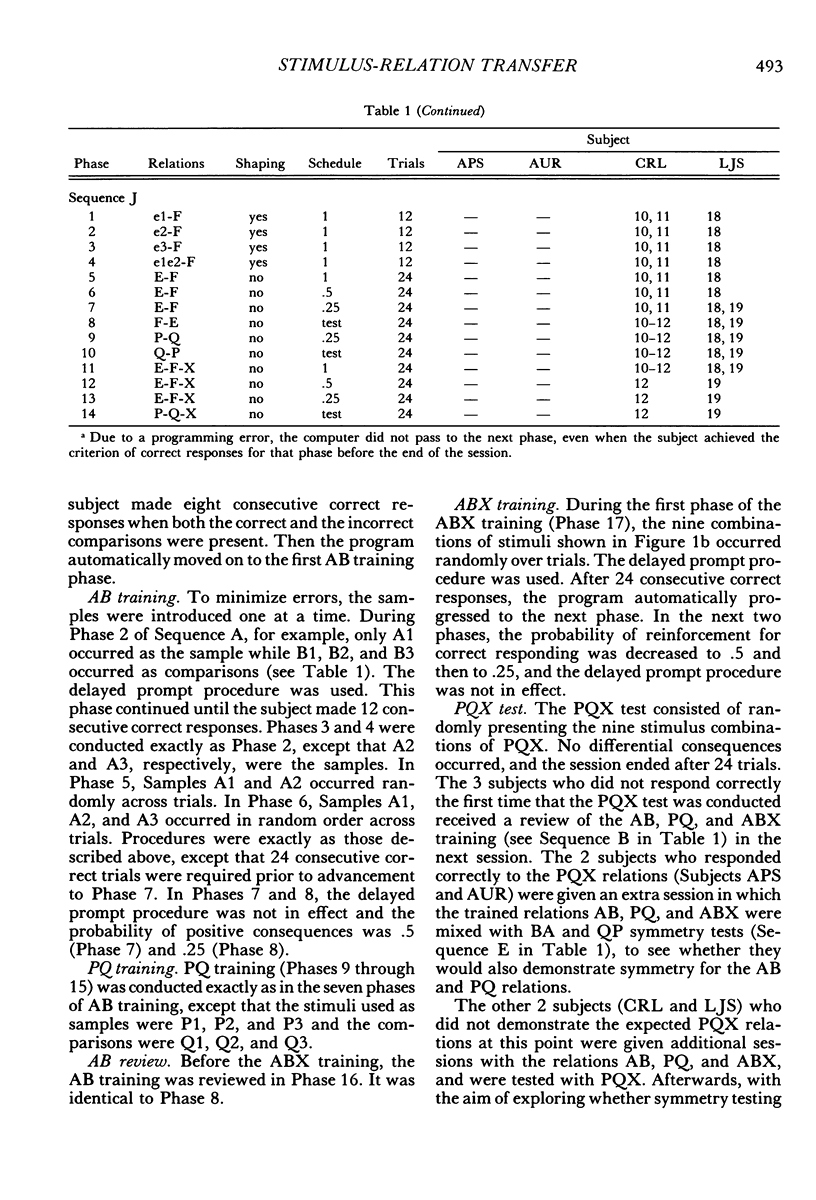
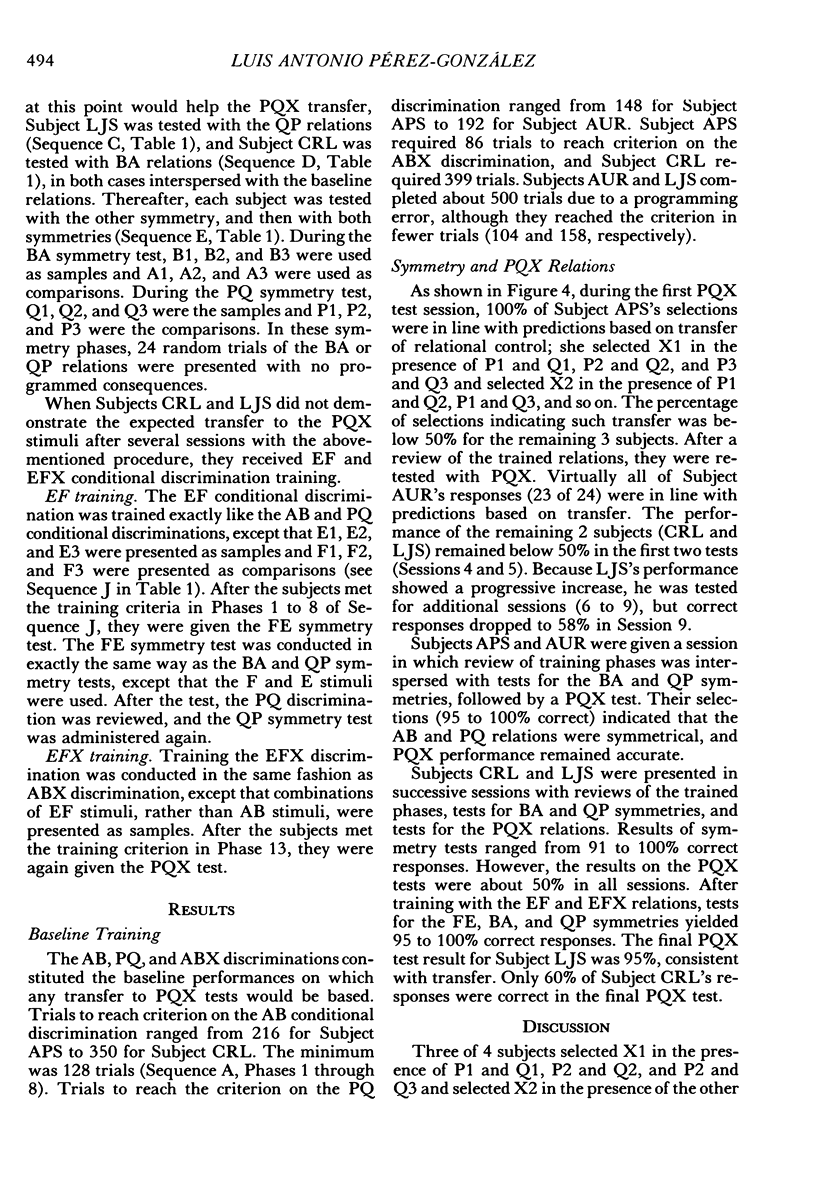
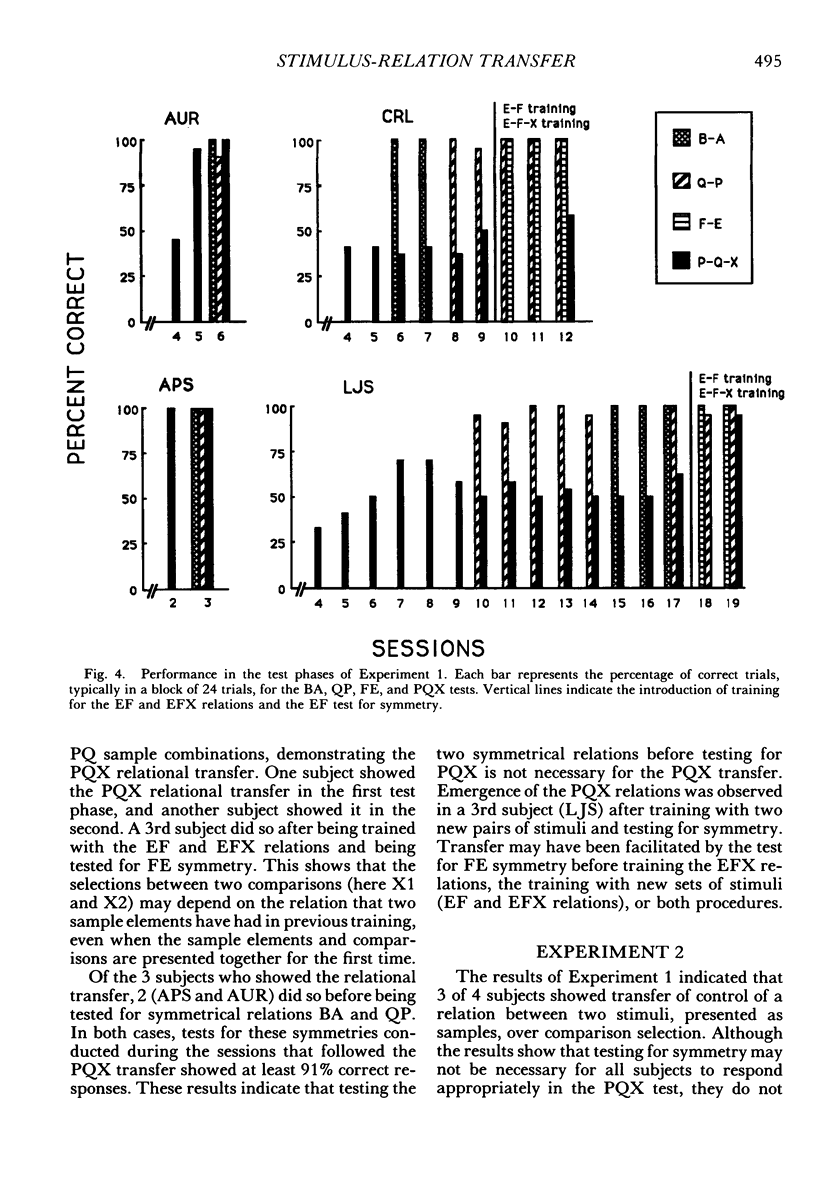
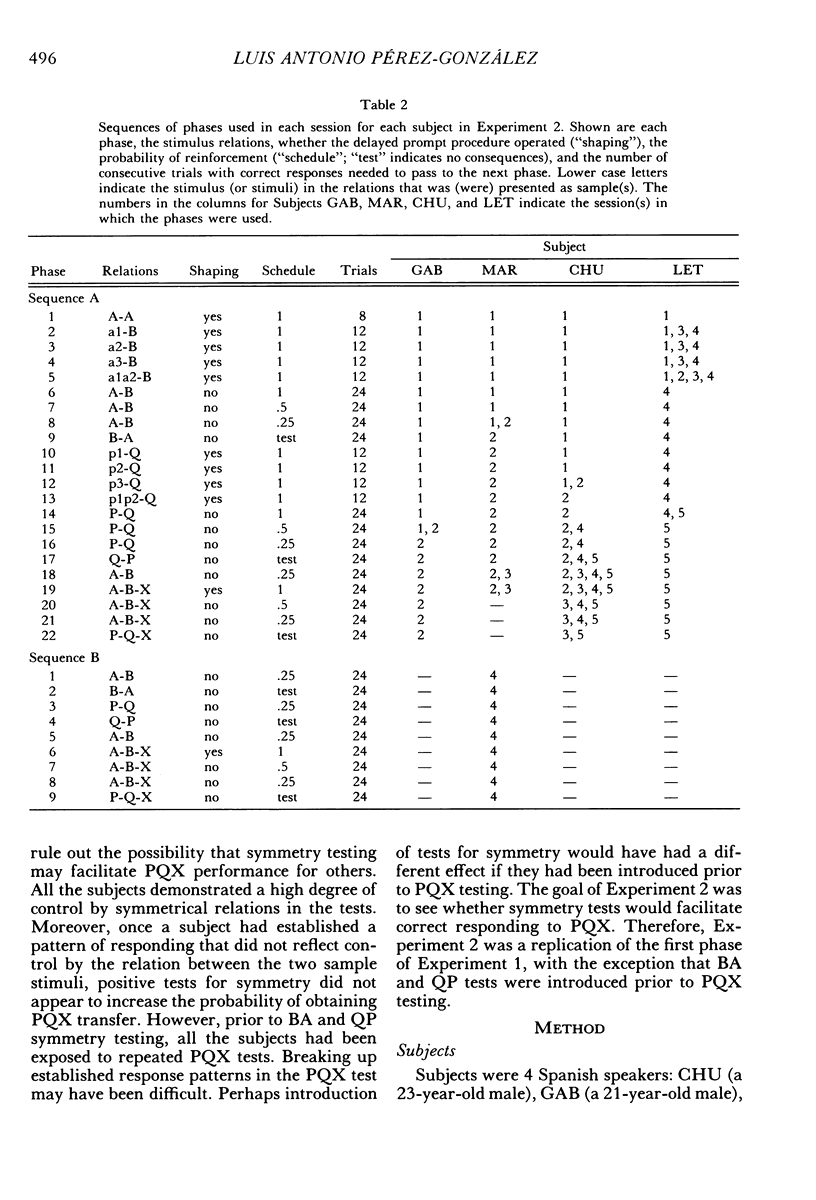

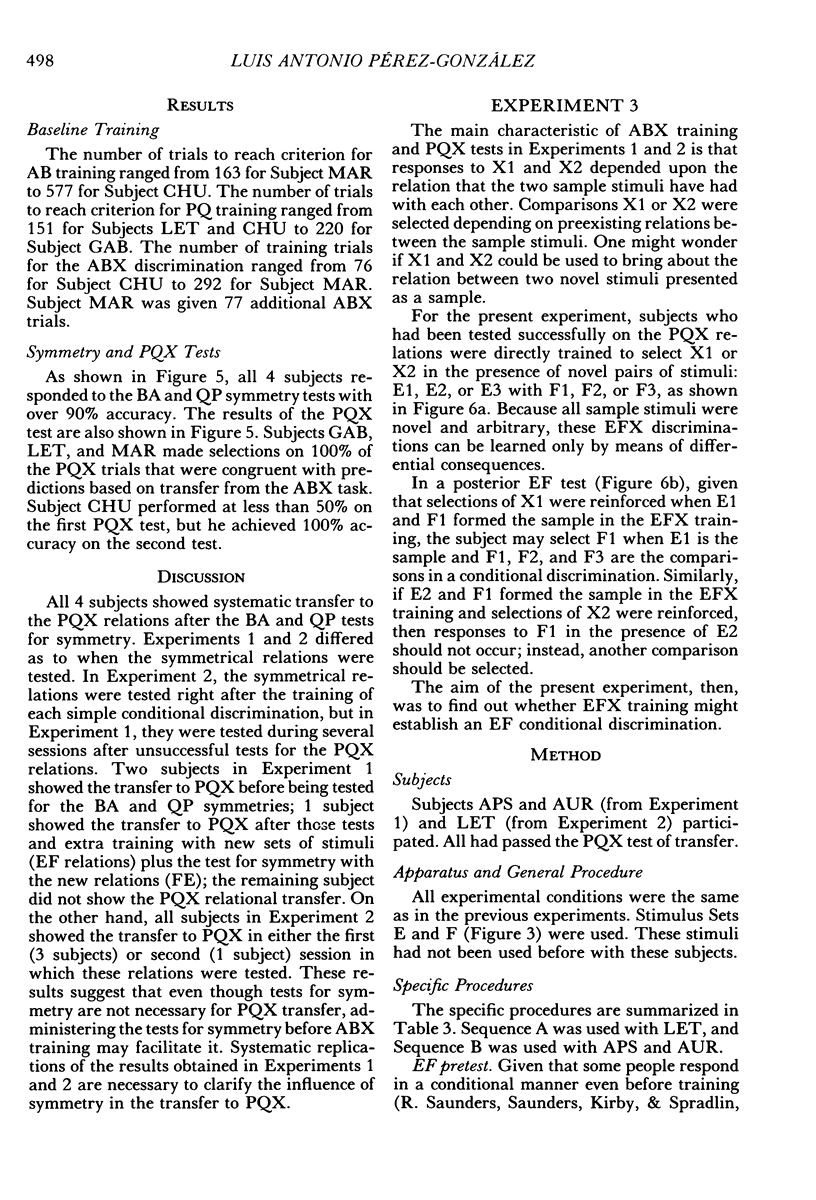
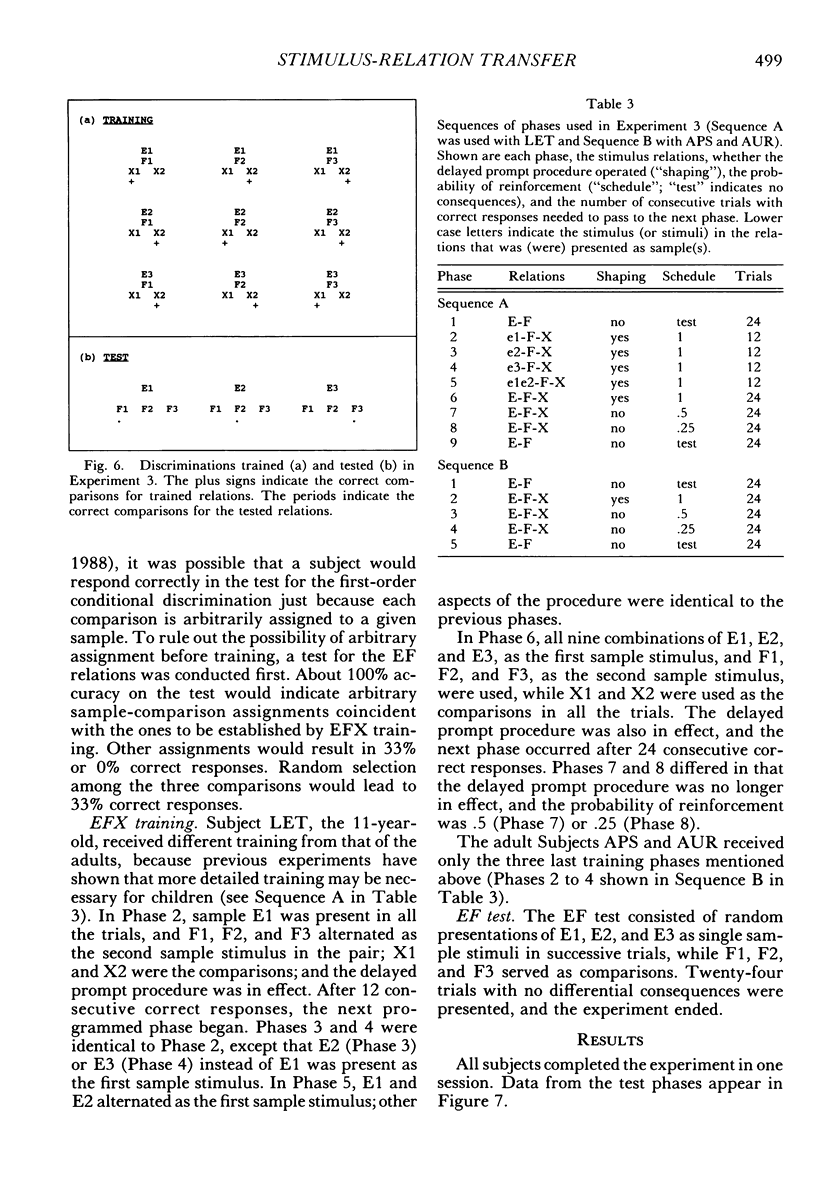
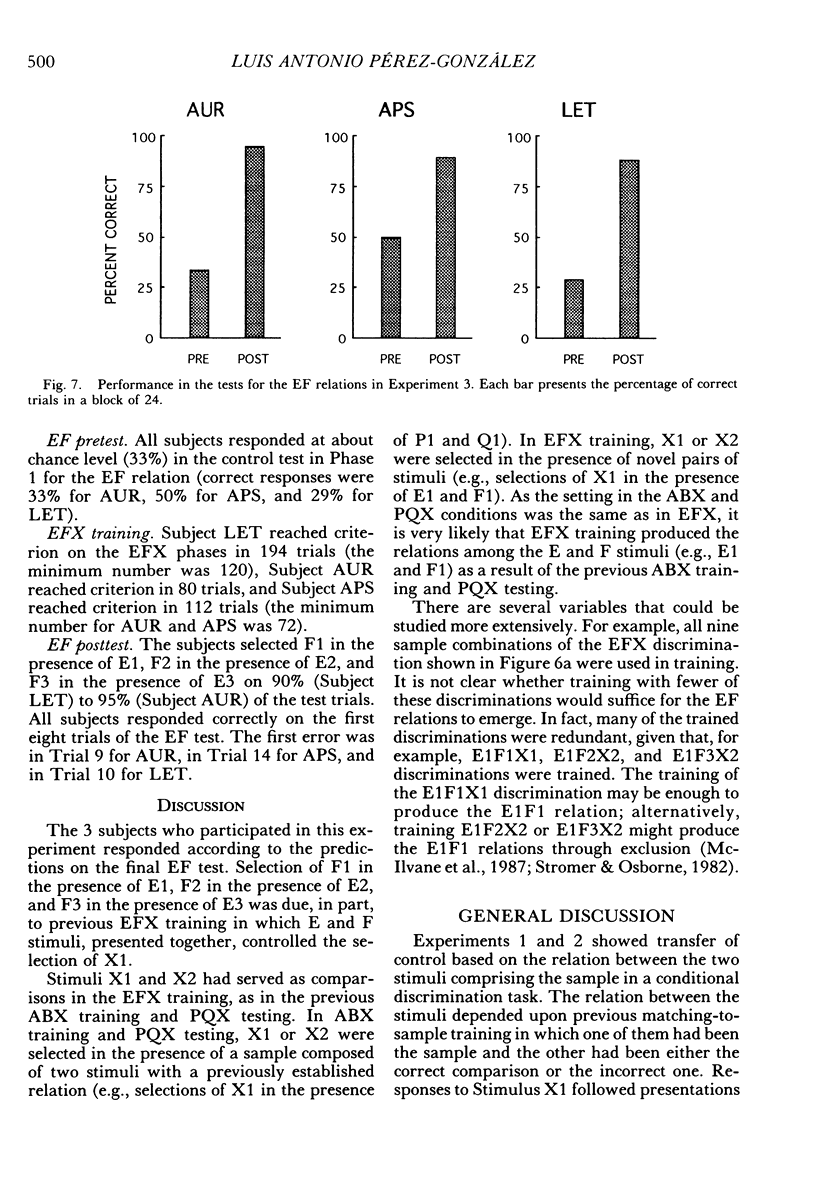
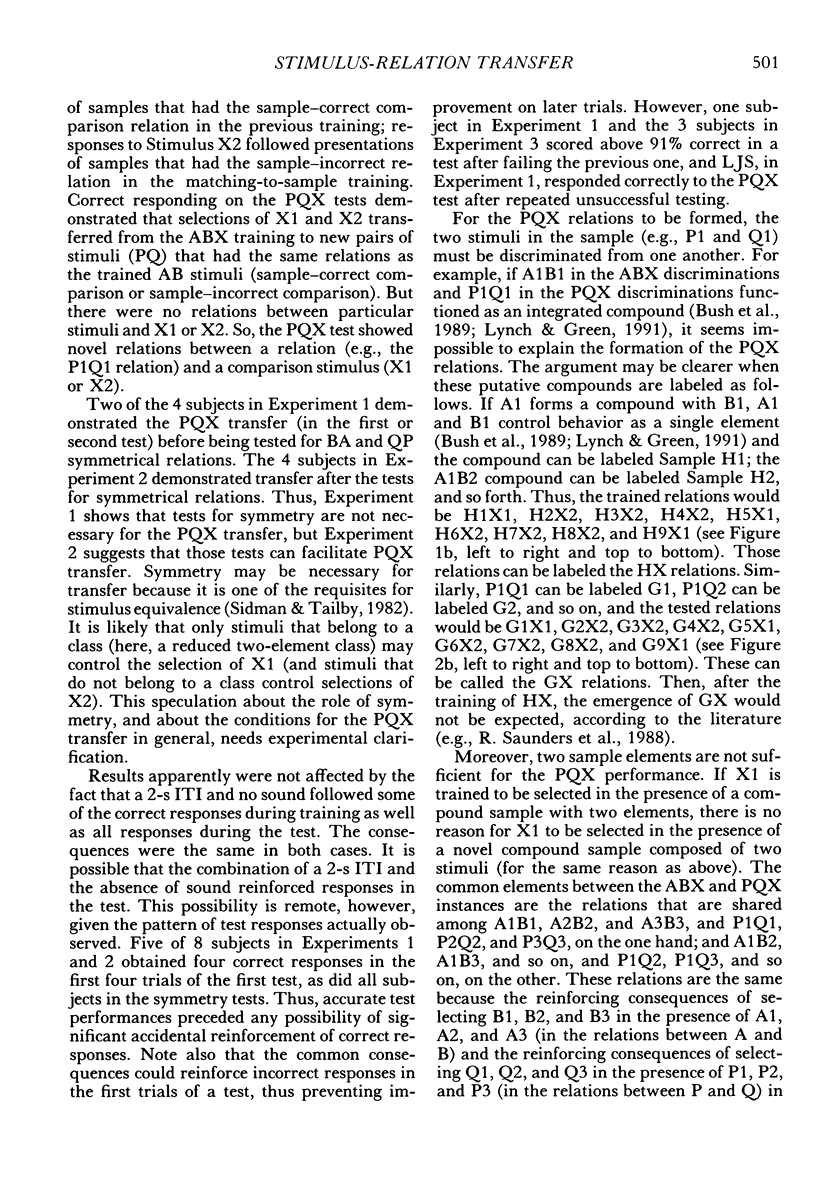
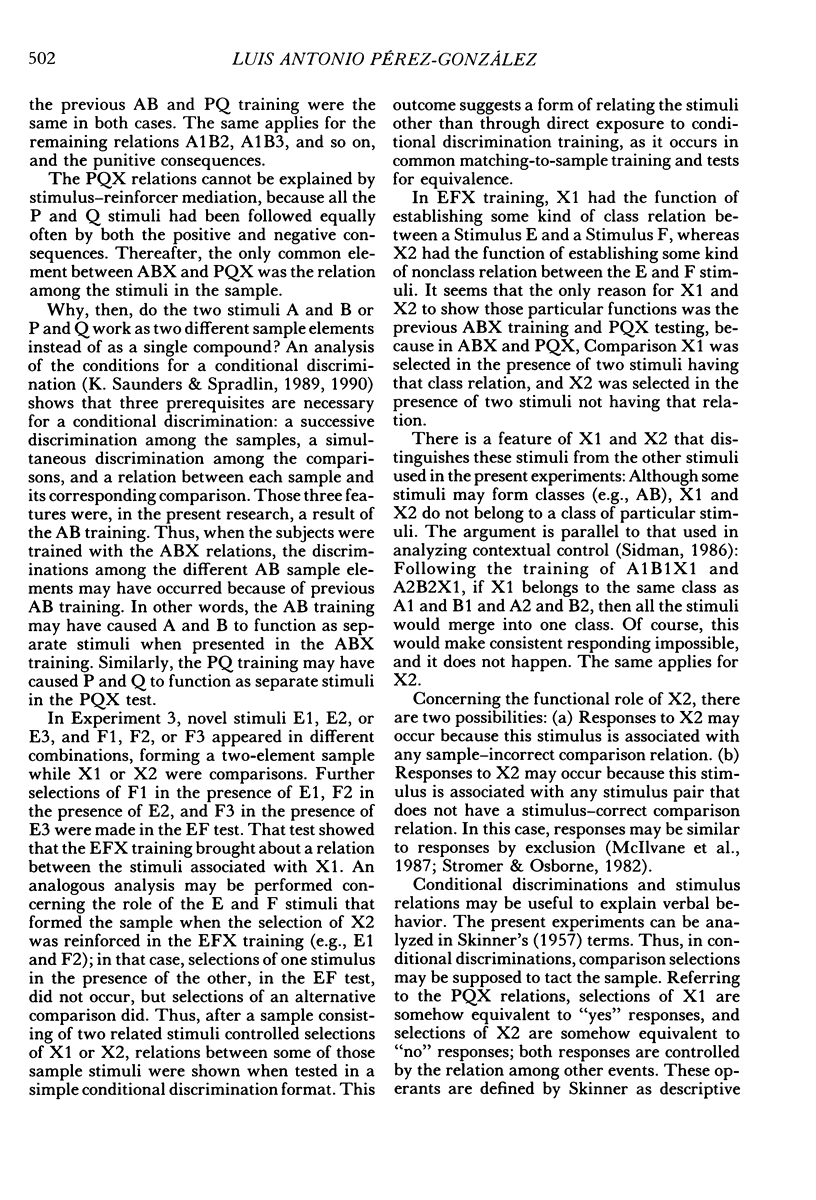
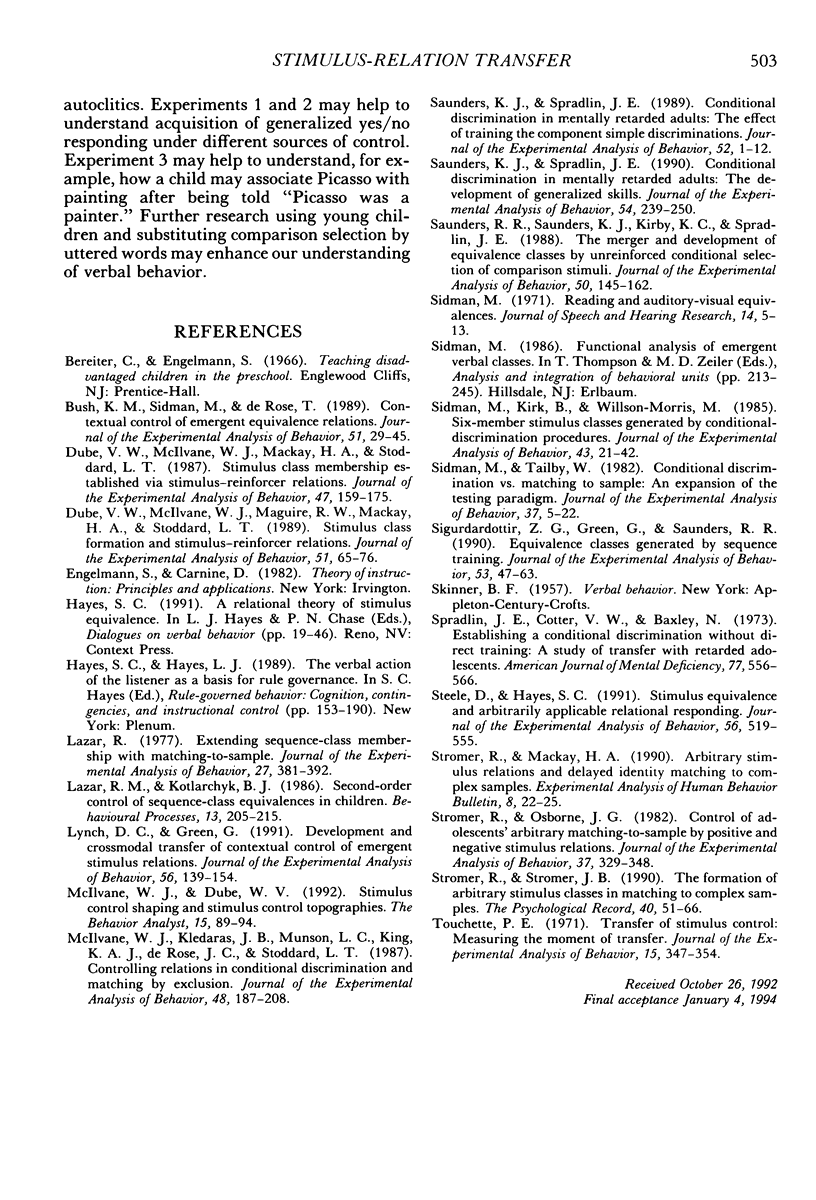
Selected References
These references are in PubMed. This may not be the complete list of references from this article.
- Bush K. M., Sidman M., de Rose T. Contextual control of emergent equivalence relations. J Exp Anal Behav. 1989 Jan;51(1):29–45. doi: 10.1901/jeab.1989.51-29. [DOI] [PMC free article] [PubMed] [Google Scholar]
- Dube W. V., McIlvane W. J., Mackay H. A., Stoddard L. T. Stimulus class membership established via stimulus-reinforcer relations. J Exp Anal Behav. 1987 Mar;47(2):159–175. doi: 10.1901/jeab.1987.47-159. [DOI] [PMC free article] [PubMed] [Google Scholar]
- Dube W. V., McIlvane W. J., Maguire R. W., Mackay H. A., Stoddard L. T. Stimulus class formation and stimulus-reinforcer relations. J Exp Anal Behav. 1989 Jan;51(1):65–76. doi: 10.1901/jeab.1989.51-65. [DOI] [PMC free article] [PubMed] [Google Scholar]
- Lazar R. Extending sequence-class membership with matching to sample. J Exp Anal Behav. 1977 Mar;27(2):381–392. doi: 10.1901/jeab.1977.27-381. [DOI] [PMC free article] [PubMed] [Google Scholar]
- Lynch D. C., Green G. Development and crossmodal transfer of contextual control of emergent stimulus relations. J Exp Anal Behav. 1991 Jul;56(1):139–154. doi: 10.1901/jeab.1991.56-139. [DOI] [PMC free article] [PubMed] [Google Scholar]
- McIlvane W. J., Kledaras J. B., Munson L. C., King K. A., de Rose J. C., Stoddard L. T. Controlling relations in conditional discrimination and matching by exclusion. J Exp Anal Behav. 1987 Sep;48(2):187–208. doi: 10.1901/jeab.1987.48-187. [DOI] [PMC free article] [PubMed] [Google Scholar]
- Saunders K. J., Spradlin J. E. Conditional discrimination in mentally retarded adults: the development of generalized skills. J Exp Anal Behav. 1990 Nov;54(3):239–250. doi: 10.1901/jeab.1990.54-239. [DOI] [PMC free article] [PubMed] [Google Scholar]
- Saunders K. J., Spradlin J. E. Conditional discrimination in mentally retarded adults: the effect of training the component simple discriminations. J Exp Anal Behav. 1989 Jul;52(1):1–12. doi: 10.1901/jeab.1989.52-1. [DOI] [PMC free article] [PubMed] [Google Scholar]
- Saunders R. R., Saunders K. J., Kirby K. C., Spradlin J. E. The merger and development of equivalence classes by unreinforced conditional selection of comparison stimuli. J Exp Anal Behav. 1988 Sep;50(2):145–162. doi: 10.1901/jeab.1988.50-145. [DOI] [PMC free article] [PubMed] [Google Scholar]
- Sidman M., Kirk B., Willson-Morris M. Six-member stimulus classes generated by conditional-discrimination procedures. J Exp Anal Behav. 1985 Jan;43(1):21–42. doi: 10.1901/jeab.1985.43-21. [DOI] [PMC free article] [PubMed] [Google Scholar]
- Sidman M. Reading and auditory-visual equivalences. J Speech Hear Res. 1971 Mar;14(1):5–13. doi: 10.1044/jshr.1401.05. [DOI] [PubMed] [Google Scholar]
- Sidman M., Tailby W. Conditional discrimination vs. matching to sample: an expansion of the testing paradigm. J Exp Anal Behav. 1982 Jan;37(1):5–22. doi: 10.1901/jeab.1982.37-5. [DOI] [PMC free article] [PubMed] [Google Scholar]
- Sigurdardottir Z. G., Green G., Saunders R. R. Equivalence classes generated by sequence training. J Exp Anal Behav. 1990 Jan;53(1):47–63. doi: 10.1901/jeab.1990.53-47. [DOI] [PMC free article] [PubMed] [Google Scholar]
- Spradlin J. E., Cotter V. W., Baxley N. Establishing a conditional discrimination without direct training: a study of transfer with retarded adolescents. Am J Ment Defic. 1973 Mar;77(5):556–566. [PubMed] [Google Scholar]
- Steele D., Hayes S. C. Stimulus equivalence and arbitrarily applicable relational responding. J Exp Anal Behav. 1991 Nov;56(3):519–555. doi: 10.1901/jeab.1991.56-519. [DOI] [PMC free article] [PubMed] [Google Scholar]
- Stromer R., Osborne J. G. Control of adolescents' arbitrary matching-to-sample by positive and negative stimulus relations. J Exp Anal Behav. 1982 May;37(3):329–348. doi: 10.1901/jeab.1982.37-329. [DOI] [PMC free article] [PubMed] [Google Scholar]
- Touchette P. E. Transfer of stimulus control: measuring the moment of transfer. J Exp Anal Behav. 1971 May;15(3):347–354. doi: 10.1901/jeab.1971.15-347. [DOI] [PMC free article] [PubMed] [Google Scholar]


